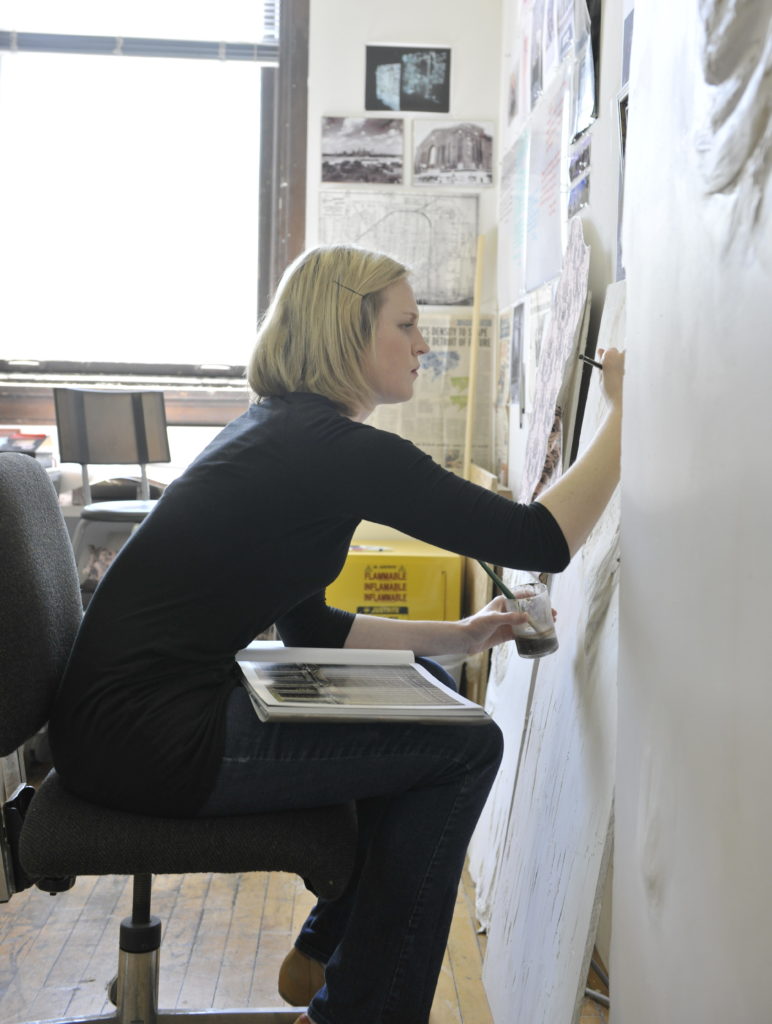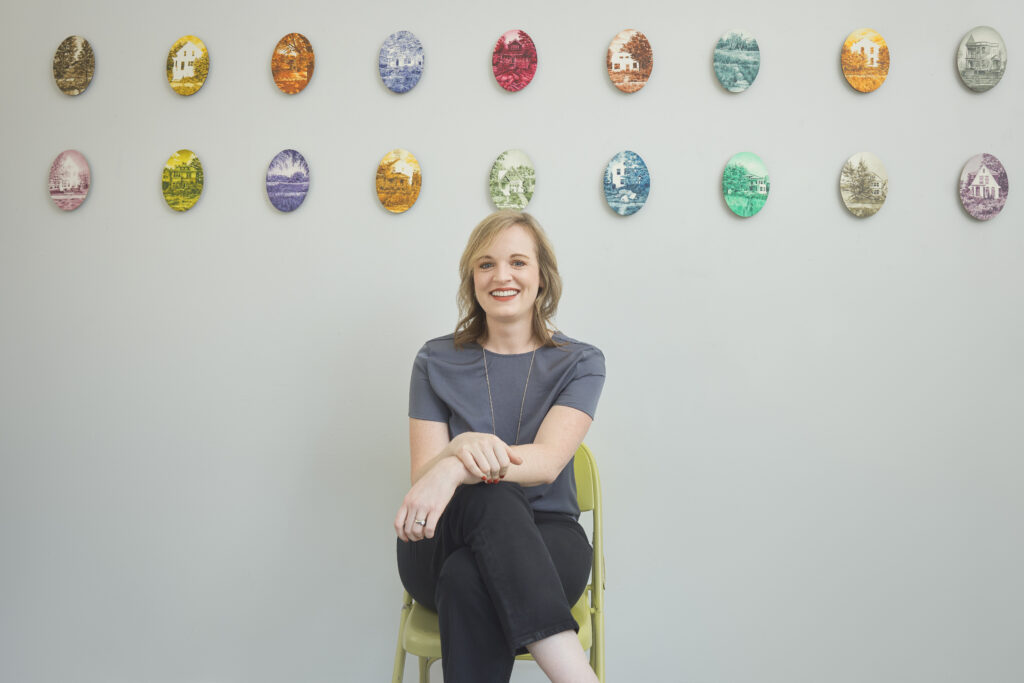About Whitney
Whitney Lea Sage, a native of suburban Detroit, Michigan, currently lives and works as a tenure-track Assistant Professor of Art at North Central College in Naperville, Illinois. Whitney attended Miami University in Oxford, Ohio and graduated cum laude in 2008 with Bachelor’s degrees in Art Education and Painting. Whitney earned her M.F.A. in Studio Art from the Sam Fox School of Visual Art at Washington University in St. Louis in May, 2011.
Artist Statement
Across my career and a variety of media and disciplines, my work centers on midwestern “Rust Belt” cities as subject, both to create open dialog about challenging and uncomfortable histories, as well as to critically examine the lenses through which communities view and represent one another. As a native of the suburban Detroit area, the rich history of midwestern cities like Detroit and its bellwether relevance to the American experience has always been influential my identity and philosophies as an artist. Midwestern cities are places of increasing cultural and national relevance-our post-industrial economy and affinity for consumptive sprawl left behind ghostly architectural skeletons and pervasive racial and economic inequality. And while many midwestern cities have experienced a recent resurgence of cultural interest and a reinvestment of resources, visions for renewal often failed to reconcile with continuing inequity.
My work co opts the visual iconography and histories of architecture and landscape for their ability to reflect larger cultural ideals and shifts. Through the failings of the depicted architecture, the work addresses the current challenges facing cities and the communities that call them home. As a suburbanite, my work addresses my own relationship with the city through the lens of an outsider and confronts the long-standing contentious relationships between cities and suburbs due to issues of race, politics, money and mistrust. The themes I focus upon within various bodies of my work highlight the experiential distance between viewer and viewed through directly confronting the misrepresentation and ambivalence often reflected in the attitudes towards urban communities and in the commonplace tropes of media coverage of urban areas.
My most recent bodies work, through the mediums of painting and sculpture, focus their lens on the endangered communities and unrecognizable neighborhoods left behind by generations of disinvestment and abandonment. In connecting architectural forms with people and lived experiences, these ongoing series depict voided absent homes and empty lots as a form of historical marker and stark reminders of the absence left behind by the physical erasure of markers of history in the name of blight removal or gentrification. The use of familiar middle class archetypal home and homewares serve as empathetic entry points for viewers to connect to the experience of individual people and families who occupied each site. Through the voided negative shapes and empty lots that remain, viewers are invited to consider the collective loss of identity, memory and belonging they represent and our shared protective impulse for the people and places we love.


